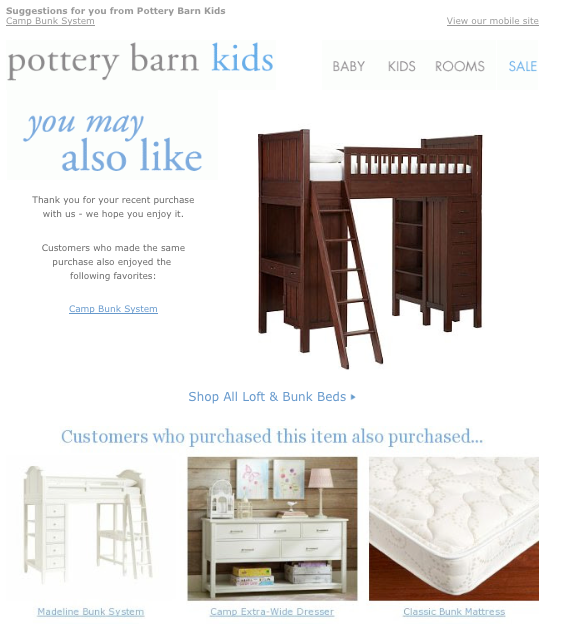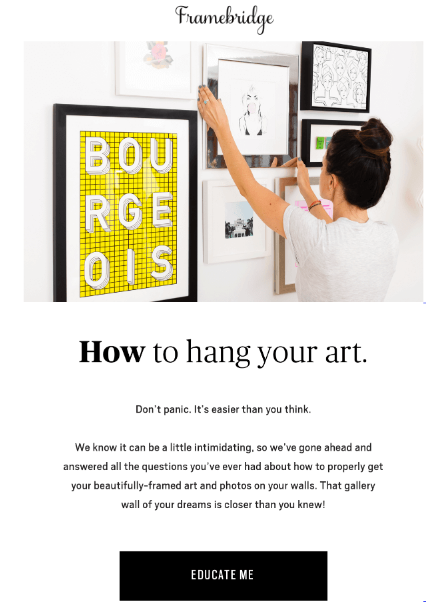I can hear you now: “I thought email marketing was dead…”
I don’t blame you for thinking that way; I definitely ignore 99% of the emails that come through my inbox on a daily basis. But I don’t ignore them because I hate getting email.
I ignore them because, quite frankly, they don’t really offer much value at all. But the 1% I do open almost always get me to engage further with the sender, whether it be an individual or a company.
What I’m trying to say is: Thanks to software like Keap, email marketing isn’t dead.
But it’s not 1997 anymore, either. The novelty of receiving email has worn off.
Today, you can’t just slap together an email blast and assume everyone on your mailing list is going to immediately stop what they’re doing to read what you have to say—unless you give them something worth checking out.
Before we get into discussing the email formats that are most successful in engaging customers, here are some of the hard facts:
- The conversion rate of emails is higher than that of direct mail, social media, and most other forms of marketing
- 81% of online shoppers are more likely to make a purchase after receiving a targeted offer through email
- Email open rates increased to 34.1% in 2016 (click-thru rates, however, decreased)
That last statistic tells you one thing: Consumers are still willing and eager to receive correspondence through email, but you need to follow through with value when sending them.
So, now that we know email marketing is still alive and well, how do we effectively implement it to build and grow a business?
Let’s take a look at the six types of emails that work best to get your customers on the hook and ready to engage further with your brand. I’ll also provide best practices for creating these emails, and give prime examples of companies that have mastered the art of email marketing.
1. The welcome email
Perhaps the most obvious email to add to your arsenal is the welcome email, to be used immediately once a prospect or customer has interacted with your brand for the very first time.
Source / Come back to this example after reading the section; it touches all the bases.
Effective welcome emails are both personalized and personable.
The most basic way to personalize your welcome email is to use your customer’s name in the greeting and throughout your message. But you can take your personalization a step further by using what you know about your customer (such as their location or interests, depending on the information they’ve provided) to showcase certain products or services that may be of value to them.
Your welcome email should simultaneously represent your brand while also treating your customer as an individual. If your brand is fun-loving and quirky, your welcome email should have some whimsy. If your company is more serious, tone your welcome email down a bit. But, above all else, remember to write the email as if you’re writing to a friend—that’s what your customers will notice.
A welcome email is also a great way to “set the stage” for what’s to come for your new customer as well as help with the onboarding process.
Use it as an opportunity to explain exactly what your company is all about, how to get started with your product or service, and to gather insight and feedback from your customers. Then, follow up with an offer and a call-to-action that lets your new customer dive right in and see for themselves what you can do for them.
Len Markidan, head of marketing at Groove had the following to say about their welcome email:
“Like most welcome messages, this email thanks the user for signing up and lets them know how to get started with Groove. But most importantly, it asks a critical question: Why did you sign up?
With this question, we’ve been able to transform our messaging based on what we learned is most important to new customers, and we’ve been able to build deeper relationships with those customers by helping them with whatever unique goals or challenges drove them to sign up.”
2. The post-purchase email
Once a prospect has officially become a paying customer (or a return customer has made a new purchase), you have a ton of options for how to reach out to them and spur further engagement with your brand.
First and foremost, take the time to thank them for their business. After all, if it weren’t for your paying customers, you wouldn’t have a successful business in the first place.
You can also use a post-purchase email to provide further instructions for how to use the product or service in question. Or, at the very least, let your customers know your support staff is only an email, phone call, or tweet away.
For further engagement, you might choose to include any of the following:
- Cross-sells and supplemental offers
- Options for customers to share the purchase with friends via social media
- Options for customers to provide feedback to your company
Source / Really, what’s a bed frame without a mattress?
By providing all of this after your customer has already given you their money, you prove that you’re goal is to make them happy—not just to make a quick buck.
3. The newsletter/announcement
Your customers are busy people who have a lot going on in their lives. So it’s entirely forgivable that your brand isn’t always the first thing on their mind.
But, by sending them an occasional newsletter, you can remind them not only that your company exists, but that you’ve provided value for them in the past—and that you continue to value them as a customer.
Newsletters can be used to provide the following:
- New product releases or service offerings
- Improvements and other changes made to current products or services
- Special offers and discounts
A quick caveat regarding newsletters:
Sending out recurring newsletters for the sake of sending an email doesn’t work. Simply put: Your customers don’t care about the goings-on at your company unless it affects them. There’s no point in wasting time and energy putting together a newsletter unless you have something important to tell your customer base. This approach will most likely be ignored, and it might end up getting future emails sent straight to your customers’ spam folders.
4. The educational email
It’s no secret that producing educational content can help you position your brand as an expert in your industry. But simply producing such content is useless unless your customers actually see it.
By sending out email blasts that either include or link to such content, you increase the chances that your customers will not only see your content but that they’ll take the time to engage with it.
Such educational emails could include blog posts or videos that you’ve created in-house, or they could include curated roundups of valuable pieces of content others have created.
The main goals of educational emails are to deepen your customers’ understanding of your industry, and also to make them even more aware of how your company could be of service to them. Or, as mentioned above, you might just provide further instructions for how to get the best use out of the products you offer.
5. The celebratory email
Want your customers to be happy? Give them something to celebrate!
Celebratory emails can be sent on occasions in which the customer didn’t really have to do anything (such as birthdays and brand-related anniversaries). Or they can be sent after a milestone has been reached (either on your customer’s end or your company’s).
Source / This doubles as a “thank you,” as well.
You might also choose to share the success of other customers with the rest of your customer base, as well. Such success stories can keep customers motivated, and also provide real-world proof that your services are, in fact, incredibly valuable.
6. The re-engaging email
Email marketing allows you to re-engage with potentially lapsed customers in a non-intrusive, but still attention-getting, manner.
Re-engaging emails need to be ultra-personalized in order to be effective. The typical “We miss you!” email doesn’t work, as it offers little to no context to remind customers of what your brand has to offer, or why they engaged with you in the first place.
Source / A bit cheesy, but it puts the ball in the customer’s court.
Instead, such emails need to refer back to previous interactions and purchases a customer has made from your company—and then provide incentives for them to re-engage. Perhaps you’ve made improvements to (or completely revamped) a product they purchased in the past, or maybe you’ve developed a new product that goes hand-in-hand with a past purchase. As long as you can provide more value to your ready-to-churn customers, the re-engaging email could be a lifesaver.
A quick note on saying goodbye
Sometimes, there literally isn’t anything you can do to get a churning customer to change their mind. But you can squeeze one last drop of value from them by giving them the chance to fill out an exit survey once they’ve “officially” decided to sever ties with your brand.
Conclusion
Going back to what I said at the beginning: Email marketing isn’t dead.
What is long gone is the assumption that your customers will check out your email just because you send it to them.
But, implemented correctly, a proper email marketing strategy can do wonders in terms of moving customers along the buyer’s journey and keeping them within the customer lifecycle loop.
Josh Brown is the Content and Community Manager at Fieldboom, a provider that allows people to create and publish beautiful online surveys and feedback forms in minutes. You can follow Fieldboom and Josh on Twitter to receive in-depth business and marketing advice and tips.








